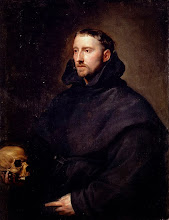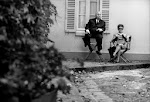
In 1971, producer Nate Waschberger asked Jerry Lewis to direct and star in "The Day the Clown Cried", based on Joan O’Brien’s book by the same name, about a German clown who was arrested by the Gestapo, interred in a concentration camp, and used to march Jewish children into the ovens. Jerry lost close to 40 pounds to play the role. The shooting began in Stockholm, but Waschberger not only ran out of money to complete the film, but he failed to pay Joan O’Brien the money she was owed for the rights to the story. Jerry was forced to finish the picture with his own money. The film has been tied up in litigation ever since, and all of the parties involved have never been able to reach an agreeable settlement. Jerry hopes to someday release the film, which remains to this day, a significant expression of cinematic art, suspended in the abyss of international litigation.
synopsis:
It's World War Two (already a bad start) and Lewis plays a German clown named Helmut Doork (!?). He's fallen in the ranks at the great circus and rages on in hopes of being number one again. The problem is he's a mean drunk and a jerk. He goes on a drunken speil at a tavern accusing the great Adolph Hitler and his mad schemes for making his job harder (it's always someone else, eh?). While literally falling down drunk (Jerry Style), he lands at the feet of two Gestapo agents who arrest him for ridiculing their Furher. He's interrogated and gives up names of everyone he knows, anti-Hitler or not, just to save his skin.
He's taken to a political prison adjacent to a concentration camp where he's tortured and ridiculed all the while signing his own praises as a great clown. When he tries to stand up to his wardens and then beaten down, he criticizes himself for showing any backbone. At one focal point, he's thrown down in the mud and notices the children laughing at him from the concentration camp side. He makes an effort to apply mud to his nose and this makes the children laugh harder. More children gather at the fence who laugh. He then exclaims, "Look....They're laughing at me. I am a great clown!" The children are some sort of catalyst and he works for only them. (This is where art imitates life with Lewis...children in need of a clown) He takes soot from the stove to work up some make up, some bird droppings for the white base, trades some food for a larger man's shoes and coat, and starts really giving the kids some performances.

The head Nazi sees how Jerry can handle the kids and is ordered to entertain them for their duration. Eventually they are herded onto a train boxcar and are headed for Auschwitz. To quiet the children and keep them distracted, the Nazis force Jerry to ride on the boxcar as well. He ends up going to Auschwitz with them and then is told to lead them to the gas chambers. The children thinks it's just showers, but Jerry's character knows differently and yet does nothing. He entertains them to the very chamber door and enters in with them. The door closes behind them and they're gassed. The End.
From all reports from the people that have seen it, Jerry plays is cold, flat and the humor is so terribly wrong as to be legendary.
Harry Shearer, who saw the rough cut in the 80's, has said," If you say'Jerry Lewis is a clown in a concentration camp' and you make that movie up in your head, it's so much better than that...and by better I mean worse. You're stunned.

With most of these kinds of things, you find that the anticipation, or the concept, is better than the thing itself. But seeing this film was really awe-inspiring, in that you are rarely in the presence of a perfect object. This was a perfect object. This movie is drastically wrong, it's pathos and it's comedy are so wildly misplaced, that you could not, in your fantasy of what it might be like, improve on what it really is.
O'Brien and Waschberger felt the same way, refused to allow this version to surface, and that's where we stand today, 37 years later. Jerry has a rough cut and a VHS copy in his vault and doesn't take interviews on the subject.























































